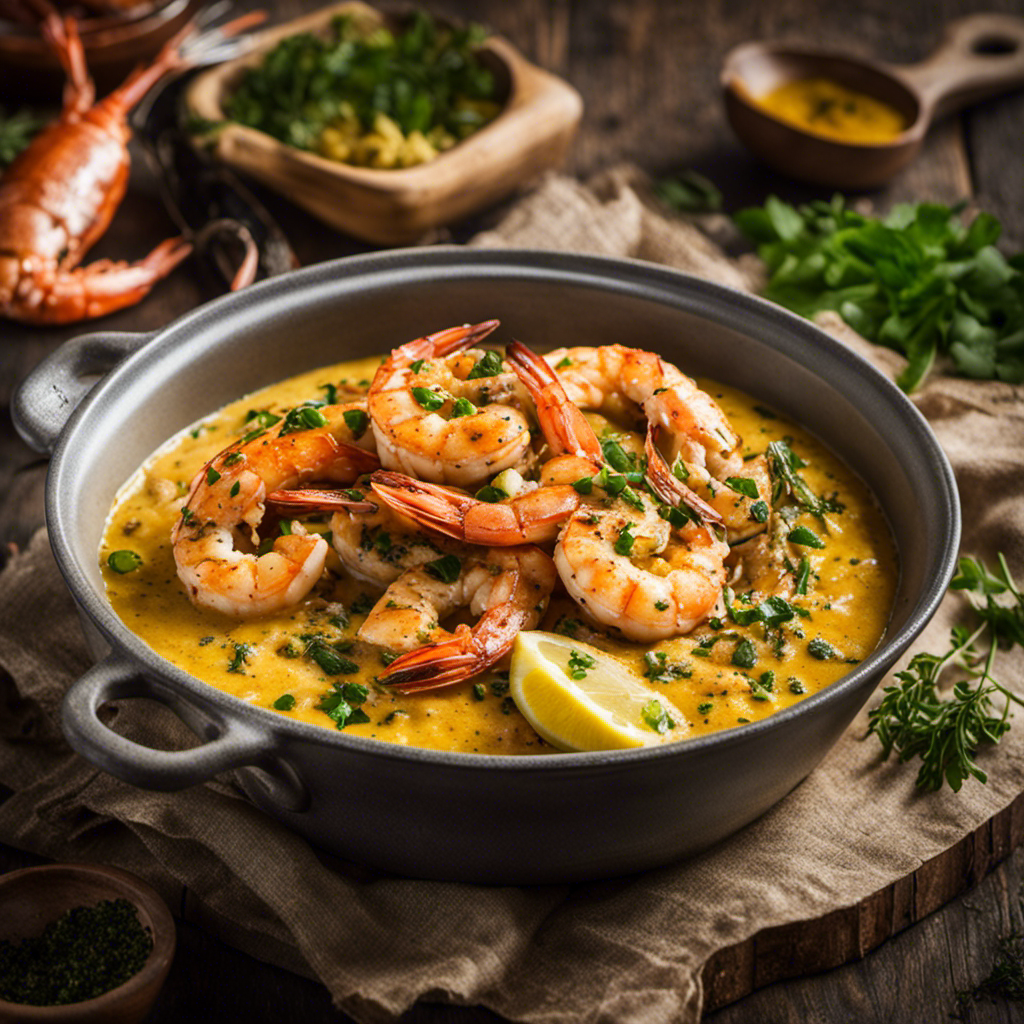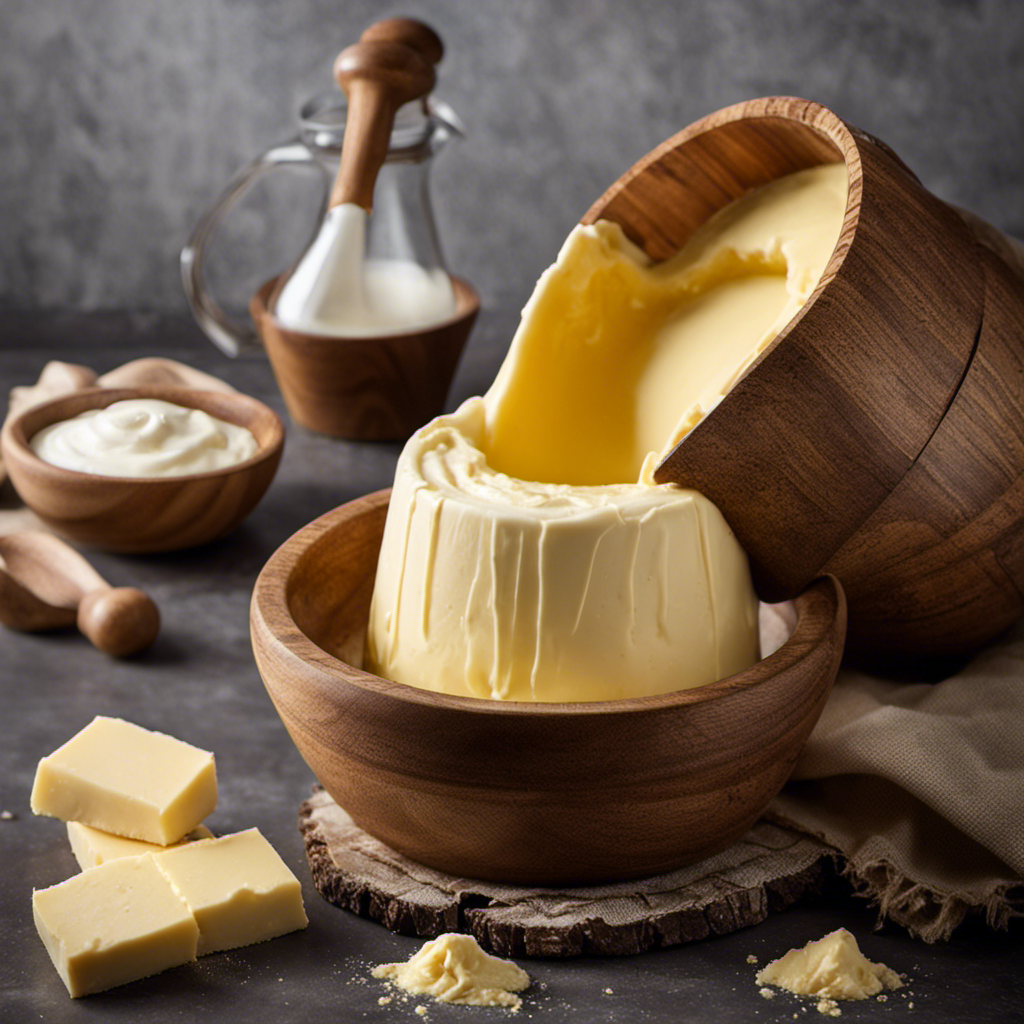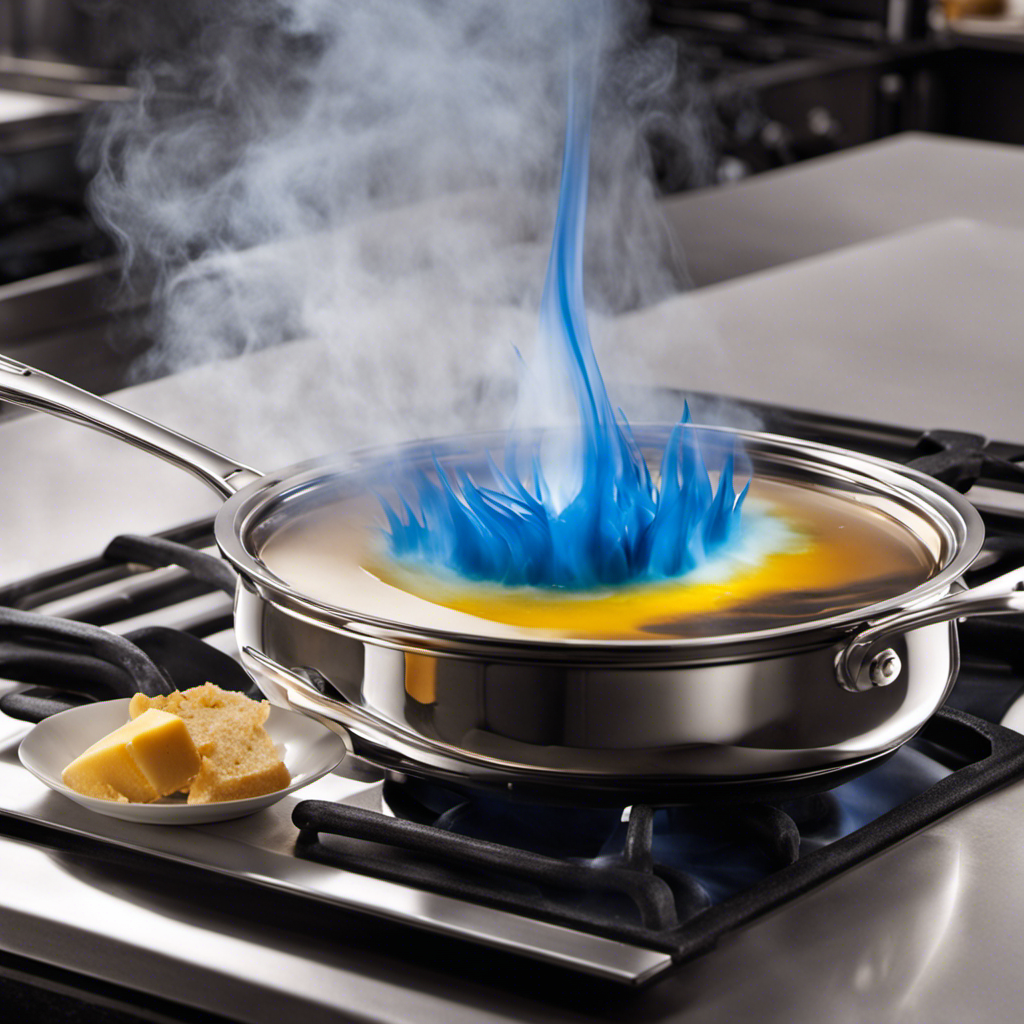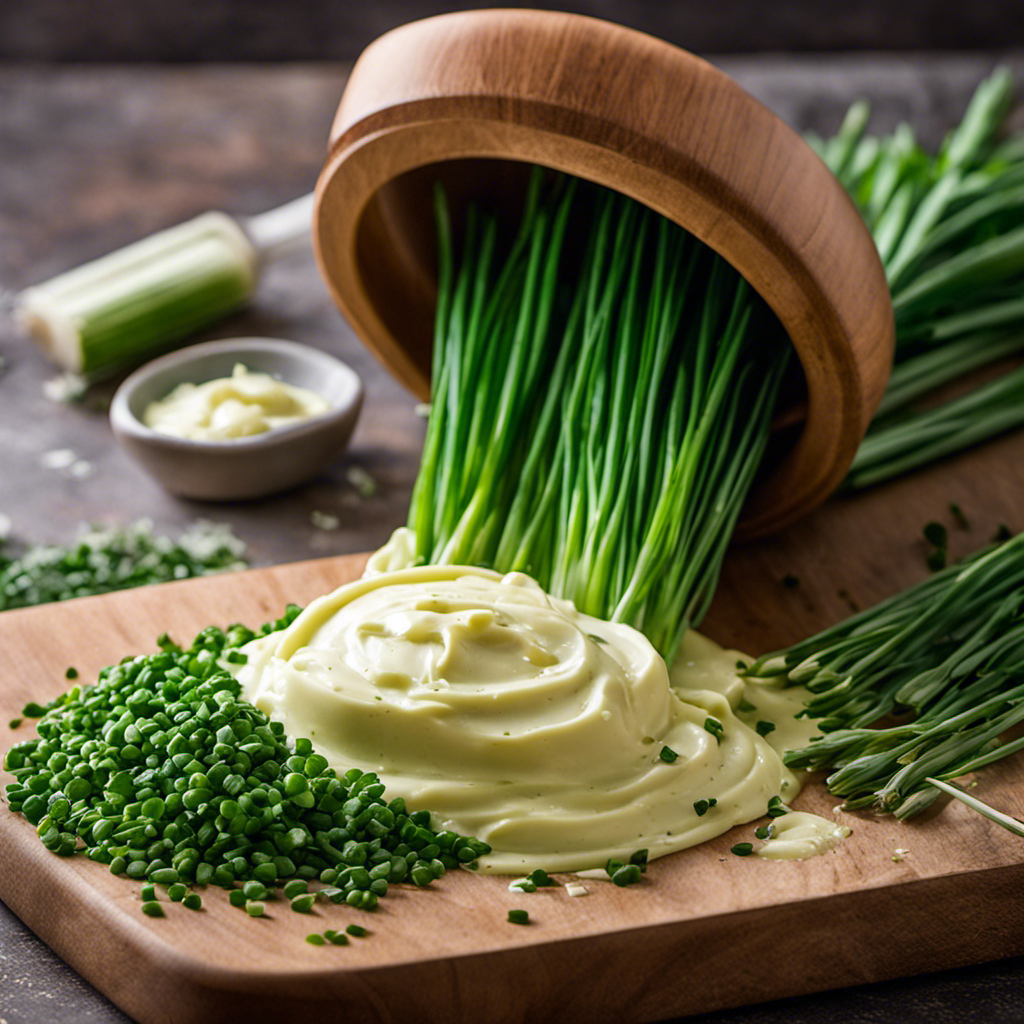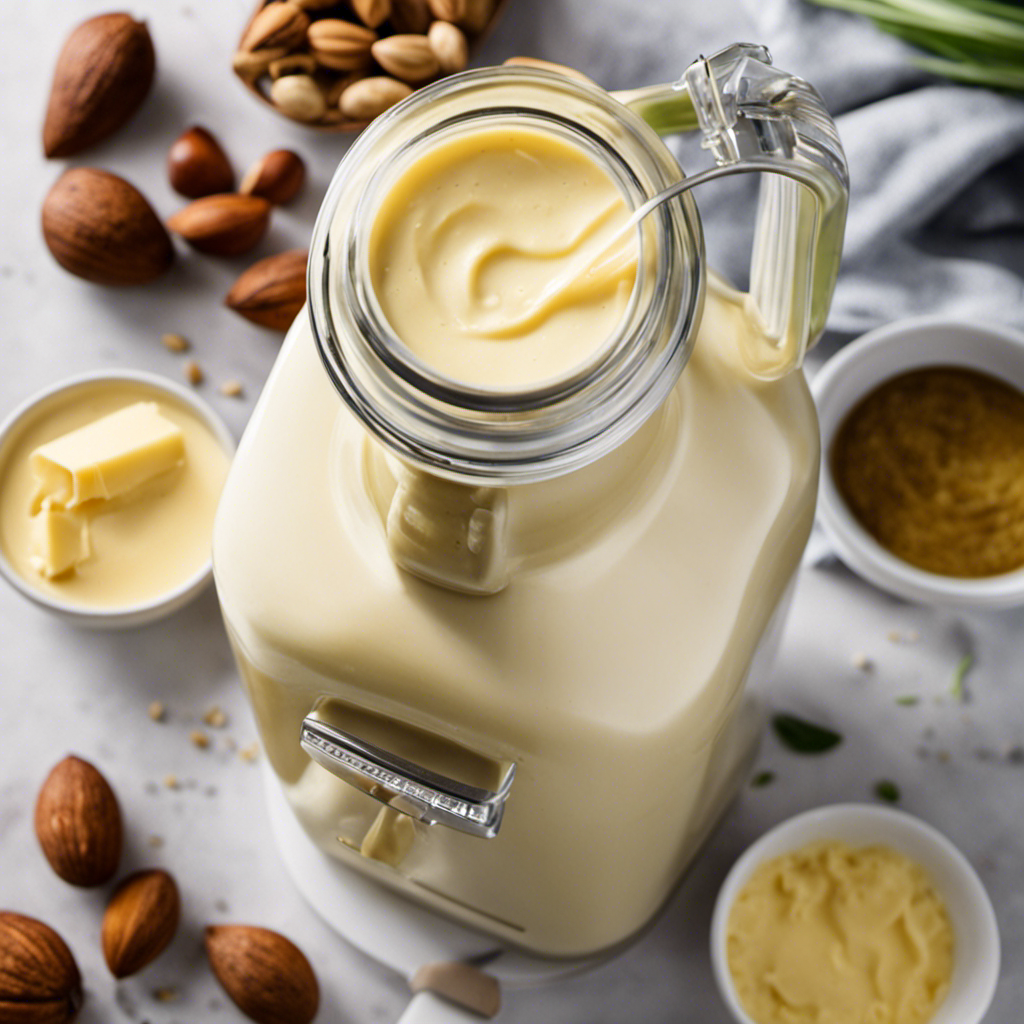Hello, fellow enthusiasts of seafood!
Today, I’m gonna show you how to whip up a lip-smacking Cajun butter sauce that’ll take your seafood dishes to a whole new level.
Trust me, once you try this sauce, you’ll be hooked!
With a blend of spices, creamy butter, and a touch of heat, this sauce is bursting with flavor.
So, grab your apron and get ready to impress your taste buds with this easy and delicious recipe.
Let’s get saucy!
Key Takeaways
- Cajun butter sauce can be made by melting butter, sautéing garlic and onions, adding Cajun spice mix, and incorporating tomato paste.
- Tomato paste enhances the flavor of the sauce and can be combined with garlic, oregano, and basil or mixed with olive oil, vinegar, and herbs/spices for tangy marinades.
- Alternative broths or liquids such as vegetable broth, seafood stock, or white wine can be used instead of chicken broth to create different flavor profiles.
- Simmering the sauce for at least 10 minutes on low heat helps achieve a thicker consistency and intensify flavors, while adding ingredients in stages enhances flavors and ensures even cooking.
Ingredients for Cajun Butter Sauce
To make Cajun butter sauce, you’ll need butter, garlic, Cajun seasoning, and lemon juice.
Cajun butter sauce is a versatile and flavorful sauce that pairs perfectly with seafood dishes.
While the basic ingredients remain the same, there are variations you can try to customize the sauce to your taste.
For a spicier version, add cayenne pepper or hot sauce.
If you prefer a milder taste, reduce the amount of Cajun seasoning.
You can also experiment with different herbs and spices like thyme, paprika, or onion powder to enhance the flavors.
Additionally, if you don’t have Cajun seasoning on hand, you can substitute it with a combination of paprika, cayenne pepper, garlic powder, and salt.
Get creative and make the Cajun butter sauce your own by exploring these alternative ingredients and variations.
Preparing the Cajun Spice Mix
Mix together the spices and herbs until well blended. When making cajun butter sauce, the spice mix is a crucial element that adds the signature flavor to the dish. There are various cajun spice variations you can use, or you can even create your own alternative spice blend. Here is a table showcasing some common spices and herbs used in cajun spice mixes:
| Spice/Herb | Quantity (in teaspoons) |
|---|---|
| Paprika | 2 |
| Garlic powder | 1 |
| Onion powder | 1 |
| Cayenne pepper | 1 |
Feel free to adjust the quantities according to your taste preferences. Once the spices and herbs are combined, you will have a flavorful cajun spice mix ready to be used in your sauce. Now, let’s move on to the next step and melt the butter.
Melt the Butter
When it comes to melting butter, there are a few key techniques to keep in mind.
First, it’s important to use a gentle heat to prevent the butter from burning or separating.
Second, you can melt butter on the stovetop using a double boiler or in the microwave using short bursts of low power.
Butter Melting Techniques
Start by melting the butter in a saucepan over low heat. This is a crucial step in making a delicious and creamy Cajun butter sauce for seafood. To achieve the perfect consistency, it is important to use the right butter melting techniques.
Here are some tips to help you achieve that creamy texture:
- Use unsalted butter: This allows you to control the saltiness of the sauce and prevents it from becoming too salty.
- Cut the butter into small cubes: This helps the butter melt evenly and quickly.
- Stir constantly: This prevents the butter from burning and ensures a smooth and creamy sauce.
Butter Melting Temperature
To achieve the perfect consistency, you’ll want to ensure that the butter melts at the right temperature. When it comes to melting butter, using the correct techniques is crucial.
One important factor to consider is the heat level. It is essential to use low heat when melting butter. This is because butter has a low smoke point and can easily burn if exposed to high temperatures. By using low heat, you can slowly and gently melt the butter without causing it to brown or develop a burnt taste.
Additionally, low heat allows the butter to melt evenly, resulting in a smooth and creamy texture. So, when melting butter for your cajun butter sauce or any other recipe, remember the importance of low heat for the perfect consistency.
Sauteing the Garlic and Onion
First, chop up the garlic and onion before sautéing them in butter and oil. This is a crucial step in creating a flavorful base for your cajun butter sauce.
When sautéing garlic, make sure to use low heat to prevent it from burning and turning bitter. You can also add a pinch of salt to help release the garlic’s aroma.
As for the onions, slice them thinly to ensure even cooking. Sauté them until they become translucent and slightly caramelized, as this will enhance their sweetness and add depth to the sauce.
To prevent the garlic and onions from sticking to the pan, stir them frequently and adjust the heat as needed.
Adding the Cajun Spice Mix
When adding the cajun spice mix, you’ll want to sprinkle it evenly over the sautéed garlic and onions, giving your dish a bold and flavorful kick.
The cajun spice mix is a crucial component of cajun butter sauce as it adds depth and heat to the dish.
If you don’t have cajun spice mix on hand, you can create your own by combining paprika, garlic powder, onion powder, cayenne pepper, dried oregano, dried thyme, salt, and black pepper. Adjust the quantities of each spice to suit your taste preferences.
Alternatively, you can also use other spice blends such as blackened seasoning or Creole seasoning as substitutes. These alternatives will still provide a delicious and aromatic flavor to your cajun butter sauce.
Experimenting with different spice combinations can also create unique variations of the sauce, allowing you to customize it to your liking.
Incorporating the Tomato Paste
When it comes to cooking, tomato paste is an essential ingredient that adds a depth of flavor to various dishes. Its concentrated and rich taste brings a burst of umami to sauces, stews, and soups.
To fully incorporate the tomato paste into a recipe, it is best to first sauté it in oil or butter. This step allows its flavors to develop and meld with other ingredients, ensuring a well-balanced and flavorful dish.
Tomato Paste’s Flavor Profile
To enhance the flavor profile of your cajun butter sauce, you’ll want to add a small amount of tomato paste. Tomato paste brings a rich, tangy taste to the sauce, adding depth and complexity. However, if you don’t have tomato paste on hand or want an alternative, there are a few options you can consider:
-
Sun-dried tomatoes: These concentrated tomatoes provide a similar flavor to tomato paste. Simply chop them finely or blend them into a paste-like consistency before incorporating them into the sauce.
-
Tomato sauce: While not as concentrated as tomato paste, tomato sauce can still add a tomato flavor to the cajun butter sauce. Keep in mind that it may thin out the sauce slightly.
-
Tomato puree: Similar to tomato sauce, tomato puree can be used as a substitute. It has a thicker consistency, which can help maintain the sauce’s thickness.
Apart from using tomato paste in cajun butter sauce, it can also be a versatile ingredient in other recipes. It adds a depth of flavor to soups, stews, and pasta sauces. Additionally, it can be used as a base for homemade pizza sauce or marinades. Experiment with different recipes to discover the unique taste tomato paste brings to your dishes.
Best Ways to Incorporate?
One popular way to incorporate tomato paste is by using it as a base for homemade pizza sauce or marinades. Tomato paste adds a rich and concentrated tomato flavor to these dishes, making them taste even more delicious.
When using tomato paste for pizza sauce, it is best to combine it with other seasonings like garlic, oregano, and basil to enhance the overall flavor.
For marinades, tomato paste can be mixed with olive oil, vinegar, and various herbs and spices to create a tangy and flavorful sauce for meats or vegetables.
Additionally, tomato paste can also be used to enhance the flavor of seafood dishes. It pairs well with fish like salmon, shrimp, and cod, adding a hint of sweetness and acidity that complements their natural taste.
Adding the Chicken Broth
After you’ve melted the butter, add the chicken broth to the saucepan. Chicken broth plays a crucial role in enhancing the flavor and texture of the Cajun butter sauce. It adds a savory and umami depth that complements the richness of the butter.
However, if you don’t have chicken broth on hand or prefer to use alternatives, there are a few options you can consider. Here are some alternatives to chicken broth and their potential effects on the sauce:
-
Vegetable broth: This can be a suitable replacement for chicken broth, especially for vegetarians or those looking for a lighter flavor profile. It will still contribute to the overall depth of the sauce.
-
Seafood stock: If you’re making a seafood-centric dish, using seafood stock instead of chicken broth can enhance the seafood flavors and create a more cohesive taste.
-
White wine: Adding a splash of white wine can bring a bright and acidic element to the sauce, balancing the richness of the butter and adding complexity.
Remember to adjust the seasoning accordingly when using alternative broths or liquids to maintain the desired flavor profile of your Cajun butter sauce.
Simmering and Reducing the Sauce
When it comes to simmering and reducing sauces, there are a few key points to keep in mind.
First, the cooking time for reduction is crucial in achieving the desired consistency and flavor.
Second, understanding the techniques for simmering can make a significant difference in the outcome of your sauce.
Cooking Time for Reduction
To achieve a thicker consistency, let the sauce simmer for at least 10 minutes. Simmering is a crucial step in the process of making Cajun butter sauce for seafood. It allows the flavors to meld together and the sauce to reduce, resulting in a rich and velvety texture.
Here are some cooking techniques and alternative ingredients to consider when simmering the sauce:
-
Cooking Techniques:
-
Stirring frequently: This prevents the sauce from sticking to the bottom of the pan and ensures even heat distribution.
-
Adjusting heat: Maintain a gentle simmer by adjusting the heat as needed, avoiding boiling or rapid boiling.
-
Covering the pan: This helps retain moisture and intensify the flavors.
-
Alternative Ingredients:
-
Coconut milk: For a dairy-free option, substitute regular butter with coconut oil and use coconut milk instead of heavy cream.
-
Vegetable broth: Replace chicken or seafood broth with vegetable broth to make it vegetarian-friendly.
-
Herbs and spices: Experiment with different herbs and spices like thyme, paprika, or smoked paprika to add depth and complexity to the sauce.
Simmering the sauce not only enhances the flavors but also thickens it to the desired consistency. Now let’s delve into the techniques for simmering the sauce further.
Techniques for Simmering
For a successful simmering process, remember to stir frequently to prevent sticking and ensure even heat distribution. Simmering is a gentle cooking technique that involves cooking food in liquid at a low temperature. It is commonly used to cook delicate foods, such as seafood, to achieve a perfect consistency. There are several simmering techniques that can help you achieve the desired results. One technique is to use a heavy-bottomed pot to distribute heat evenly. Another technique is to keep the heat low and maintain a steady simmer, avoiding boiling or rapid bubbling. Additionally, adding ingredients in stages can help to enhance flavors and ensure even cooking. By following these simmering techniques, you can create delicious dishes with a rich and flavorful sauce.
| Simmering Techniques | Achieving Perfect Consistency |
|---|---|
| Use a heavy-bottomed pot | Stir frequently |
| Maintain a steady simmer | Add ingredients in stages |
| Keep the heat low | |
Importance of Low Heat
Using low heat is crucial when simmering because it allows the flavors to meld together slowly and prevents the food from overcooking. Simmering is a slow cooking technique that involves cooking food in liquid at a temperature just below boiling. Here are the benefits of using low heat in simmering:
- Enhanced flavor: Low heat allows the flavors of the ingredients to slowly infuse into the liquid, resulting in a rich and flavorful sauce.
- Tender texture: Cooking at a low temperature ensures that the proteins in the food are gently cooked, resulting in a tender and succulent texture.
- Retained nutrients: By cooking at a low heat, the vitamins and minerals in the food are preserved, making it a healthier cooking method.
Incorporating the heavy cream into the cajun butter sauce will add a creamy and luxurious texture to the dish.
Incorporating the Heavy Cream
Once the heavy cream is added, stir the mixture until it becomes smooth and creamy. The heavy cream adds richness and a velvety texture to the cajun butter sauce.
However, if you don’t have heavy cream on hand or prefer a lighter alternative, there are a few options you can try.
One alternative is half-and-half, which is a combination of milk and cream. It will still give the sauce a creamy consistency, but with a slightly lower fat content.
Another option is evaporated milk, which has a thicker and creamier texture than regular milk.
You can also use Greek yogurt or sour cream for a tangy twist. Experiment with these alternatives to find the taste and texture that you prefer.
Now that the sauce is smooth and creamy, it’s time to move on to seasoning and adjusting the flavors to perfection.
Seasoning and Adjusting the Sauce
Now that you’ve achieved a smooth and creamy consistency, it’s time to add your desired seasonings and adjust the flavors to your liking. Here are some tips to help you perfect your cajun butter sauce:
-
Start by adding salt and pepper to taste. This will enhance the overall flavor of the sauce.
-
If you want to bring out the heat, try adding cayenne pepper or red pepper flakes. Be careful not to make it too spicy, though.
-
For a smoky flavor, consider adding a dash of paprika or smoked paprika.
-
If you want a tangy twist, squeeze in some fresh lemon juice or add a splash of vinegar.
-
To give your sauce an herby aroma, sprinkle in some dried thyme or oregano.
Remember, adjusting the seasoning is a personal preference, so feel free to experiment with different spices and quantities until you get the taste you desire.
In the next section, we will discuss how to serve and store your delicious cajun butter sauce.
Serving and Storing Cajun Butter Sauce
When it comes to serving and storing your delicious Cajun butter sauce, there are a few simple steps you can follow.
For serving suggestions, I recommend drizzling the sauce over grilled seafood, such as shrimp or fish, to add a burst of flavor. You can also use it as a dipping sauce for crab cakes or lobster tails.
To properly store the sauce, let it cool to room temperature and then transfer it to an airtight container. Refrigerate the sauce and it will stay fresh for up to a week. If you don’t plan on using it within a week, you can also freeze the sauce in ice cube trays and then transfer the cubes to a freezer bag. This way, you can easily thaw and use the sauce whenever you want.
Frequently Asked Questions
Can I Substitute the Tomato Paste With Tomato Sauce in the Cajun Butter Sauce Recipe?
Sure, you can substitute tomato sauce for tomato paste in the Cajun butter sauce recipe. However, keep in mind that tomato sauce has a higher water content, so the sauce may be thinner. Also, note that the shelf life of Cajun butter sauce is typically around 1 week when stored properly.
How Long Should I Simmer the Sauce to Achieve the Desired Thickness?
To achieve the desired thickness in the Cajun butter sauce, I recommend simmering it for about 10-15 minutes. This will allow the flavors to meld together and the sauce to thicken nicely.
Can I Use Vegetable Broth Instead of Chicken Broth in the Recipe?
Yes, you can use vegetable broth as a substitute for chicken broth in the Cajun butter sauce recipe. It will give a slightly different flavor profile, but still delicious.
Can I Use Margarine Instead of Butter to Make the Cajun Butter Sauce?
Sure, you can use margarine instead of butter to make a dairy-free Cajun sauce. Margarine is a non-dairy alternative that can be used in cooking and baking. It’s important to note that the taste and texture may be slightly different.
How Long Can I Store the Cajun Butter Sauce in the Refrigerator Before It Goes Bad?
I’m not sure about the exact shelf life of Cajun butter sauce in the refrigerator, but it’s generally recommended to use it within a week to ensure freshness and flavor.
Conclusion
Well, congratulations! You’ve successfully learned how to make a mouthwatering Cajun butter sauce for your seafood dishes.
Now you can impress your friends and family with this delectable creation. Just remember, the key to a perfect Cajun butter sauce lies in the balance of flavors and the careful execution of each step.
So grab your apron, get cooking, and prepare to be blown away by the tantalizing taste of this sauce.
Bon appétit!
